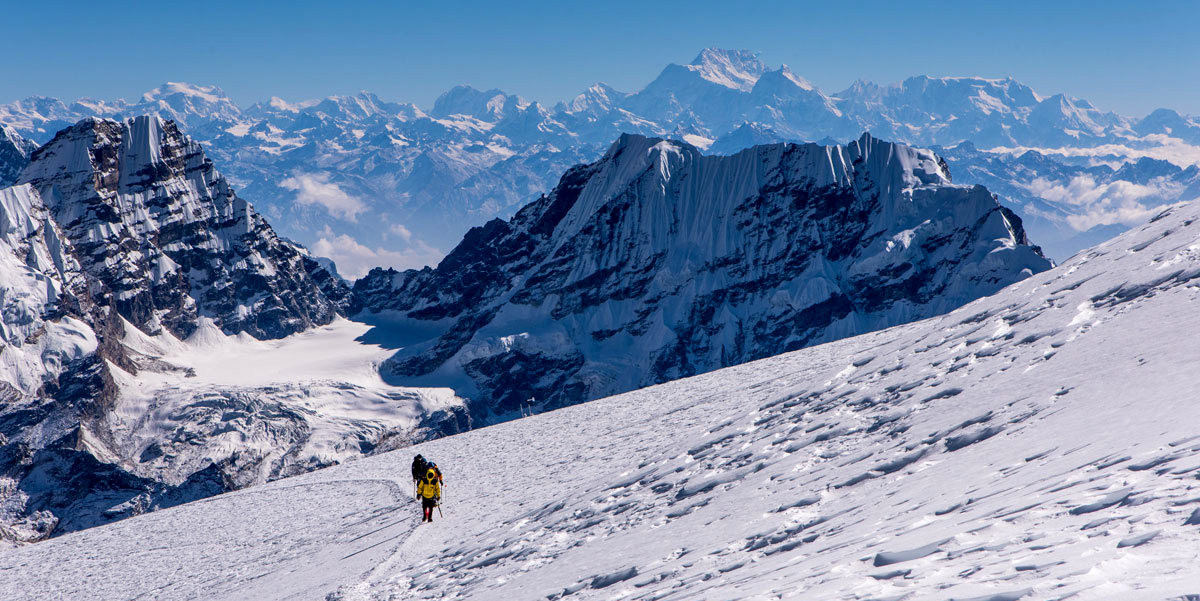Yala Peak
Yala Peak is a popular trekking peak in the Langtang Region of Nepal, well-known for being a relatively accessible and straightforward climb, especially suited for beginners in high-altitude mountaineering. Here are some key details about Yala Peak:
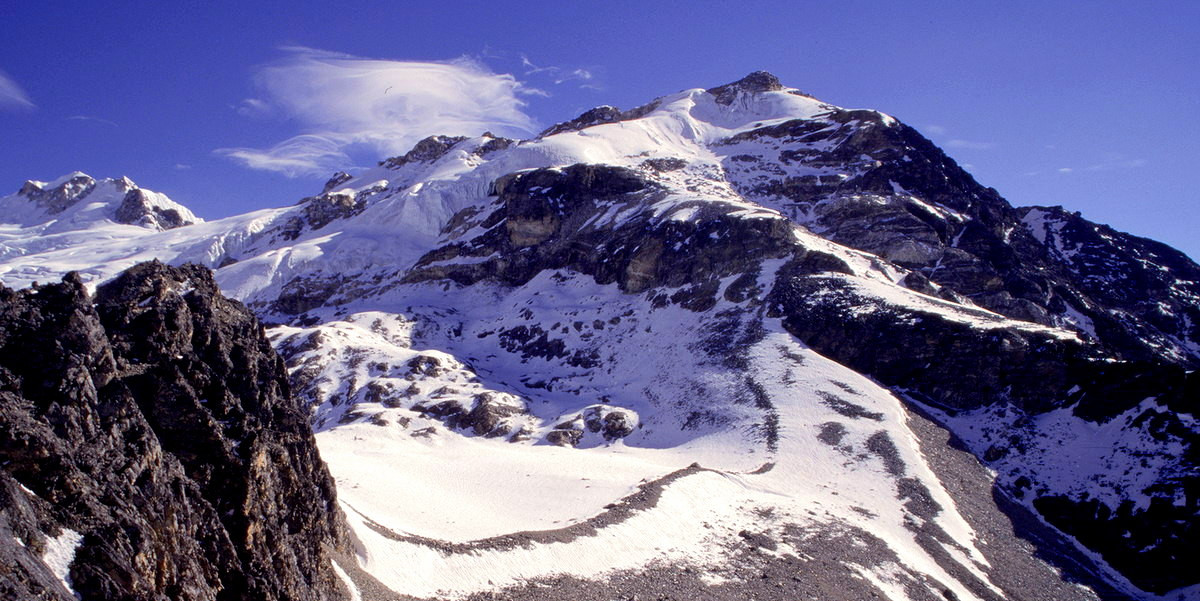
Location and Accessibility
-
Region: Langtang, located north of Kathmandu.
-
Access: The journey typically begins with a drive from Kathmandu to Syabrubesi, followed by a trek through the beautiful Langtang Valley to reach the base camp of Yala Peak.
Altitude and Climbing Experience
-
Altitude: Yala Peak stands at approximately 5,500 meters (18,044 feet).
-
Climb: It is considered one of the easier climbs in Nepal, suitable for those with little to no previous mountaineering experience. The ascent involves basic trekking with some need for technical skills near the summit.
Scenery and Environment
-
Environment: The trek to Yala Peak traverses through diverse landscapes, including forests, terraced hills, and alpine pastures.
-
Views: From the summit, climbers are treated to stunning views of Langtang Lirung, Dorje Lakpa, Gangchempo, Shishapangma (located in Tibet), and other Himalayan peaks.
Trekking Route and Duration
-
Route: The standard route involves trekking through the Langtang National Park, known for its rich biodiversity and vibrant local culture.
-
Duration: The entire trip, including the trek to the base camp and the climb, typically takes around 12-14 days.
Cultural Experience
-
Local Culture: The Langtang region is rich in Tibetan-influenced culture. Trekkers can experience local hospitality, visit monasteries, and learn about the lifestyle of the Tamang and Sherpa communities.
Yala Peak is an excellent choice for trekkers and novice climbers looking to experience the thrill of mountaineering in the Himalayas without embarking on a technically challenging climb. Its combination of natural beauty, cultural richness, and manageable ascent makes it a rewarding adventure for many.
Chulu West
Chulu West is one of the popular trekking peaks in the Annapurna region of Nepal, offering a challenging yet rewarding experience for climbers, especially those looking to step up from beginner to intermediate level. Here are some essential details about Chulu West:
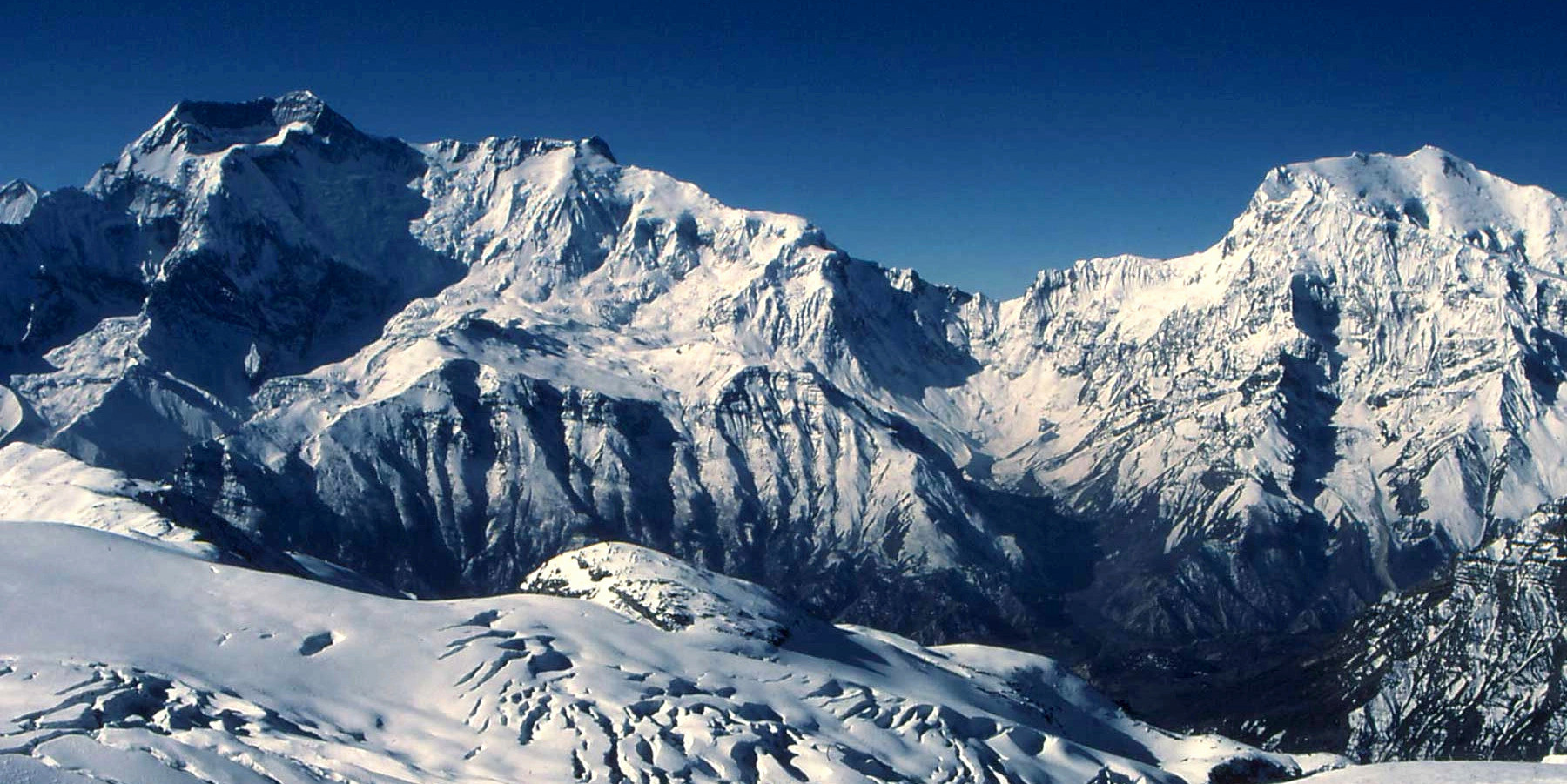
Location and Accessibility
-
Region: Situated in the Annapurna region, near the beautiful Manang Valley.
-
Access: The journey to Chulu West typically begins in Kathmandu, followed by a drive to the trailhead and a trek through the Annapurna Circuit, one of the most famous trekking routes in Nepal.
Altitude and Climbing Experience
-
Altitude: Chulu West stands at approximately 6,419 meters (21,060 feet).
-
Climb: The climb is considered moderate to challenging and is more suitable for climbers with some previous mountaineering experience. It involves steep snow and ice slopes and requires good physical fitness and acclimatization.
Scenery and Environment
-
Environment: The climb traverses a variety of landscapes, including lush forests, traditional villages, and high-altitude terrain.
-
Views: From the summit, climbers enjoy panoramic views of the Annapurna range, Dhaulagiri, Manaslu, and other Himalayan peaks.
Trekking Route and Duration
-
Route: The route usually involves part of the Annapurna Circuit, leading up to the base camp of Chulu West. The climb then follows the northwest ridge to the summit.
-
Duration: The entire expedition, including the trek to base camp and the climb, typically takes about 18-21 days.
Cultural Experience
Chulu West is an excellent choice for climbers looking to experience a more challenging ascent in the Himalayas. The combination of stunning natural scenery, cultural immersion, and the thrill of high-altitude climbing makes it a memorable adventure for those ready to take on its slopes.
Island Peak
Island Peak, also known as Imja Tse, is a popular trekking peak in the Everest region of Nepal. It offers a challenging yet achievable climb for beginners and intermediate mountaineers. Here's a detailed overview of Island Peak:
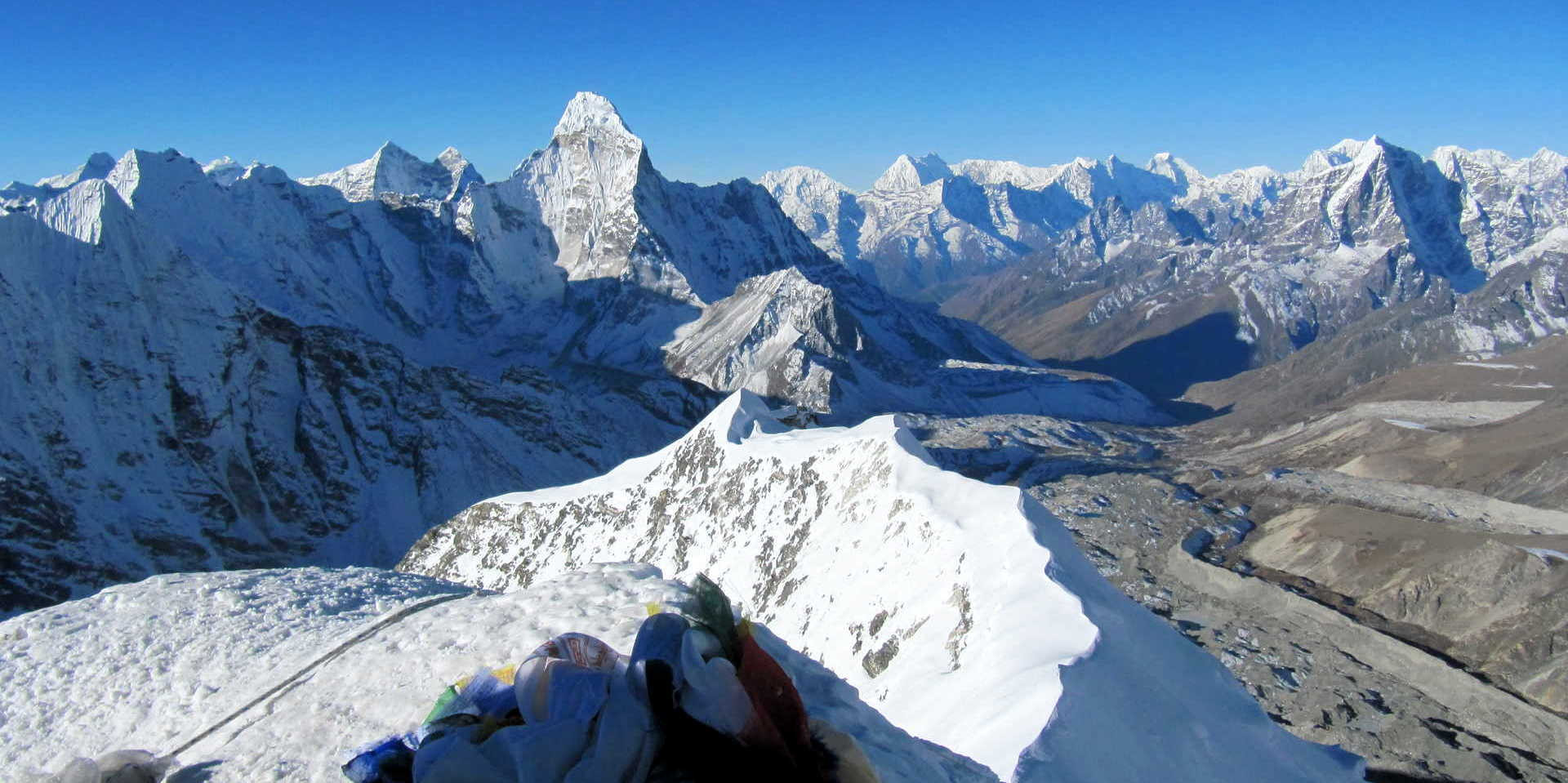
Location and Accessibility
-
Region: Situated in the Khumbu/Everest region of Nepal.
-
Access: The journey typically starts with a flight from Kathmandu to Lukla, followed by a trek through the famous Everest trail, passing through Namche Bazaar and other Sherpa villages.
Altitude and Climbing Experience
-
Altitude: Island Peak stands at an elevation of approximately 6,189 meters (20,305 feet).
-
Climb: The climb is considered moderately challenging and is a popular choice for those looking to transition from trekking to mountaineering. It involves some technical aspects, including a steep snow and ice climb to the summit.
Scenery and Environment
-
Environment: The trek to Island Peak traverses through the Sagarmatha National Park, offering diverse landscapes from lush forests to glacial moraines.
-
Views: From the summit, climbers are rewarded with spectacular views of Lhotse, Ama Dablam, Makalu, and a close-up of the south face of Nuptse.
Trekking Route and Duration
-
Route: The standard route to Island Peak involves trekking through the Khumbu Valley and acclimatizing in villages like Dingboche and Chhukung.
-
Duration: The entire expedition, including the trek to base camp and the climb, typically takes about 16-20 days.
Cultural Experience
Island Peak serves as an excellent introduction to Himalayan mountaineering for those looking to push their limits beyond trekking. Its blend of technical climbing, breathtaking scenery, and cultural richness makes it a highly sought-after objective for climbers worldwide.
Mera Peak
Mera Peak is a renowned trekking peak in the Himalayas of Nepal, celebrated for its relatively non-technical climb yet offering one of the highest accessible points for novice climbers. It presents an ideal challenge for those looking to venture into high-altitude mountaineering. Here's an overview of Mera Peak:
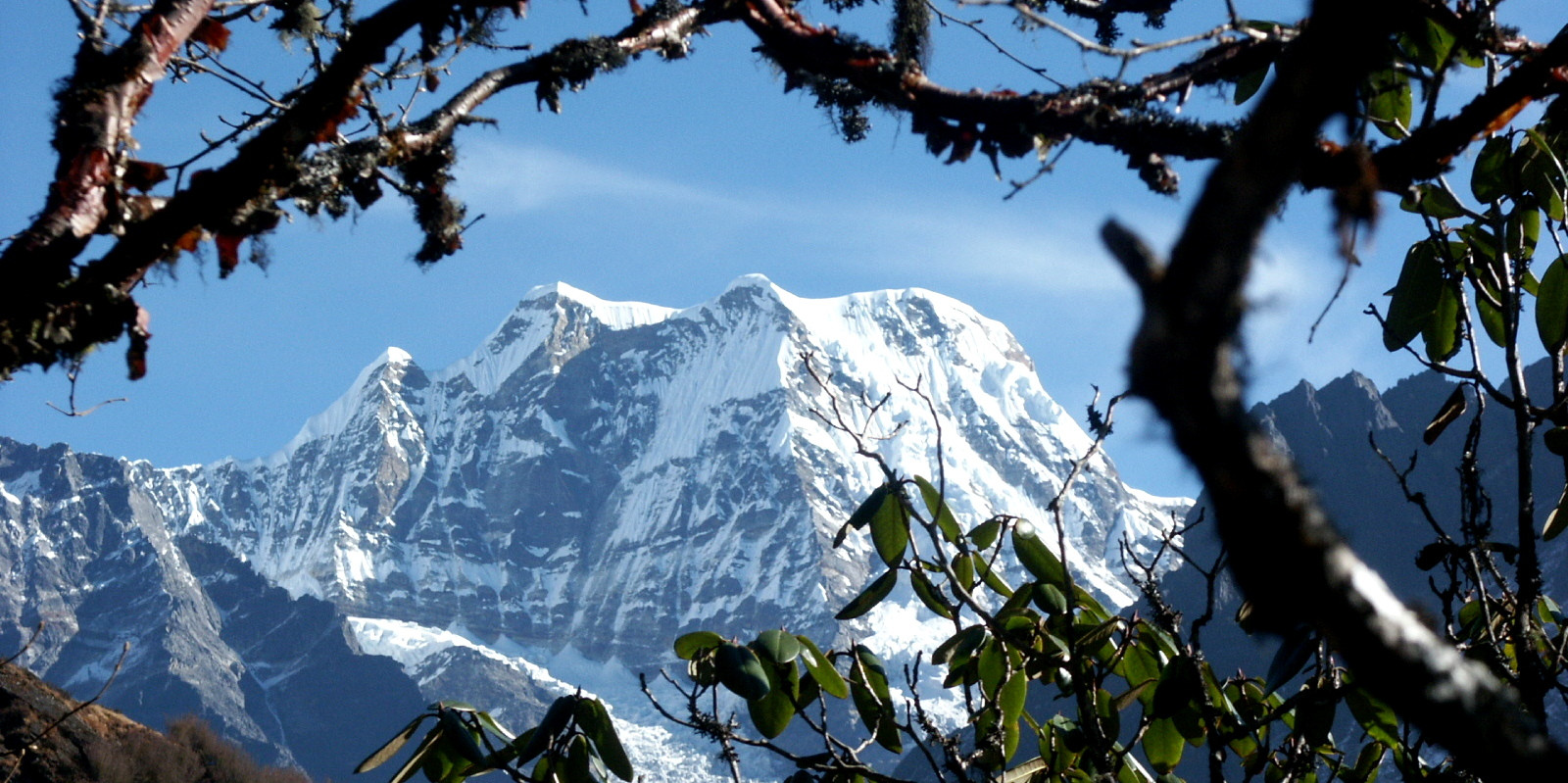
Location and Accessibility
- Region: Situated in the Makalu Barun National Park, in the Everest region.
- Access: The journey usually starts with a flight from Kathmandu to Lukla. The trek to Mera Peak is longer and more remote compared to other popular trekking peaks, taking climbers through less-traveled paths.
Altitude and Climbing Experience
- Altitude: Mera Peak is one of the highest trekking peaks in Nepal, standing at an elevation of approximately 6,476 meters (21,247 feet).
- Climb: Although it is one of the highest trekking peaks, the climb is considered non-technical. However, it does require a good level of physical fitness and acclimatization due to the high altitude.
Scenery and Environment
- Environment: The route to Mera Peak traverses through a variety of terrains, from dense forests and traditional villages to glacial landscapes.
- Views: The summit offers one of the finest panoramic views, encompassing five of the world's 8,000-meter peaks - Everest, Lhotse, Cho Oyu, Makalu, and Kangchenjunga.
Trekking Route and Duration
- Route: There are several routes to Mera Peak, with the most common being through the Hinku Valley, offering a more secluded and scenic trekking experience.
- Duration: The entire expedition, including the trek to base camp and the climb, typically requires around 16-20 days.
Cultural Experience
- Local Culture: The trek offers an opportunity to experience the lifestyle of communities in remote areas of Nepal, with their unique traditions and hospitality.
Mera Peak is a great choice for those seeking a high-altitude climbing experience without the technical complexities of more challenging peaks. Its relatively straightforward ascent, combined with the stunning Himalayan panorama, makes it a highly rewarding climb for both novice and experienced trekkers alike.
Lobuche Peak
Lobuche Peak, located in the Everest region of Nepal, is a sought-after trekking peak for climbers looking to experience the thrill of Himalayan mountaineering. It offers two main summits, Lobuche East and Lobuche West, with the East being more popular among climbers, especially beginners and intermediates. Here's an overview of Lobuche Peak:
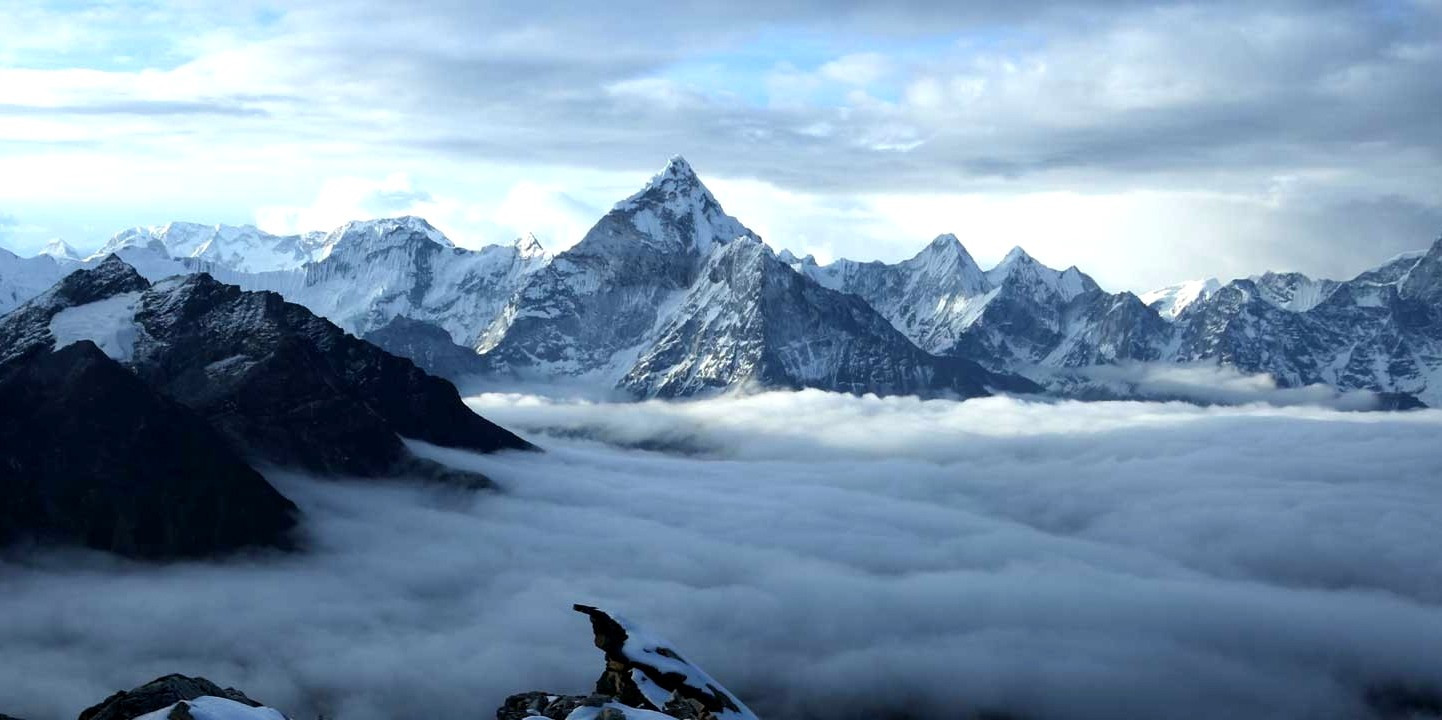
Location and Accessibility
-
Region: Situated in the Khumbu region, close to the Everest Base Camp.
-
Access: The journey typically starts with a flight from Kathmandu to Lukla. Trekkers then follow the classic Everest Base Camp trek route, diverging towards Lobuche for the final ascent.
Altitude and Climbing Experience
-
Altitude: Lobuche East stands at approximately 6,119 meters (20,075 feet), while Lobuche West is slightly higher and more challenging.
-
Climb: Lobuche East offers a more accessible climb for beginners with some basic technical aspects, including a steep snow/ice climb and a narrow ridge towards the summit.
Scenery and Environment
-
Environment: The trek traverses through iconic Sherpa villages, serene monasteries, and the Sagarmatha National Park, known for its unique flora and fauna
-
Views: From the summit, climbers enjoy spectacular views of Everest, Lhotse, Nuptse, Ama Dablam, and Pumori.
Trekking Route and Duration
-
Route: The standard route for Lobuche East involves acclimatizing in the Everest region, with a trek through famous locations like Namche Bazaar, Tengboche, and Dingboche.
-
Duration: The entire expedition, including the trek to base camp and the climb, usually takes about 18-21 days.
Cultural Experience
Lobuche Peak, particularly the East summit, is an excellent choice for climbers looking to experience a moderately challenging high-altitude climb. It offers a perfect blend of technical climbing, stunning scenery, and cultural exploration, making it a memorable adventure in the heart of the Himalayas.
Common Permits and Regulations Across All Peaks
- TIMS Card (Trekkers' Information Management System): Required for all trekkers in Nepal to ensure their safety and security. It helps in tracking trekkers in the trekking regions.
- National Park or Conservation Area Permits: Depending on the mountain’s location, you'll need a permit for entry into the respective national park or conservation area (e.g., Sagarmatha National Park for Lobuche Peak, Makalu Barun National Park for Mera Peak).
- Climbing Permit: Each of these trekking peaks requires a separate climbing permit issued by the Nepal Mountaineering Association (NMA) or the Department of Tourism.
Specific Permits and Regulations for Each Mountain
Yala Peak:
Chulu West
Island Peak (Imja Tse)
-
Situated in the Sagarmatha National Park, necessitating a Sagarmatha National Park entry permit.
-
A climbing permit specifically for Island Peak is needed.
Mera Peak
Lobuche Peak
General Regulations
- Guides and Porters: Hiring a registered guide and/or porter is highly recommended for safety reasons and ease of navigation, especially for beginners.
- Environmental Responsibility: Trekkers and climbers must adhere to environmental regulations, ensuring no litter or damage to the natural surroundings.
- Cultural Sensitivity: Respect for local customs and traditions is expected throughout the trek.
Note
- Permit Costs vary depending on the peak and season. It's advisable to check the latest fees and regulations, as they can change.
- Arrangement of Permits is often handled by trekking agencies. If you are organizing a climb independently, permits can be obtained in Kathmandu or major towns near the trek starting points.
Climbers must comply with these permits and regulations not only to abide by the law but also to support sustainable tourism and conservation efforts in these magnificent mountain regions.
Preparation and Equipment
Physical Preparation
- Cardiovascular Training: Engage in activities like running, swimming, or cycling to enhance stamina and lung capacity.
- Strength Training: Focus on leg strength, core stability, and upper body strength. Activities like hiking, climbing stairs, and weight training are beneficial.
- Altitude Acclimatization: Practice hikes at higher altitudes if possible to acclimatize your body to reduced oxygen levels.
- Mental Preparation: High-altitude climbing can be as much a mental challenge as a physical one. Prepare mentally for the challenges and isolation of mountain environments.
Equipment Checklist
Clothing
- Base Layers: Moisture-wicking thermal tops and bottoms.
- Insulating Layers: Fleece or synthetic down jacket.
- Outer Layer: Waterproof and windproof jacket and trousers.
- Gloves: A pair of lightweight and a pair of insulated gloves.
- Hats: A sun hat and a warm beanie.
- Socks: Wool or synthetic socks and liner socks.
Footwear
- Hiking Boots: Sturdy, waterproof, and broken-in.
- Climbing Boots (for Island Peak, Lobuche Peak, and possibly Chulu West and Mera Peak): Insulated, high-altitude mountaineering boots.
- Gaiters: For snow and debris protection.
Climbing Gear
- Harness: Adjustable, with gear loops.
- Crampons: Compatible with your boots.
- Ice Axe: Standard mountaineering axe.
- Helmet: Must fit over a beanie or hat.
- Carabiners, Slings, and Ropes: As advised by your guide.
Backpack and Sleeping Gear
- Backpack: Around 40-50 liters capacity, with rain cover.
- Sleeping Bag: Rated for at least -10°C, preferably lower.
- Sleeping Mat: Inflatable or foam.
Navigation and Communication
- Maps and Compass/GPS device.
- Satellite Phone or Two-Way Radio for emergencies (usually provided by tour operators).
Miscellaneous
- Sunglasses: UV-protection and high-quality.
- Headlamp: With extra batteries.
- Water Bottles or Hydration System.
- First Aid Kit: Including altitude sickness medication.
- Sun Protection: Sunscreen and lip balm with SPF.
- Trekking Poles: Especially useful for descents.
- Personal Snacks: Energy bars, nuts, etc.
- Camera: With extra batteries or charger.
- Miscellaneous: Toilet paper, wet wipes, hand sanitizer.
Note
- Rent or Buy: Many of these items can be rented or purchased in Kathmandu or other major towns in Nepal.
- Guide's Advice: Always consult with your guide or trekking agency for specific gear recommendations for each peak.
- Pack Light: While it's important to be prepared, overpacking can hinder your mobility and stamina.
Proper preparation and the right equipment are crucial for a successful and enjoyable climbing experience. These mountains, though easier than others in the region, still require respect, preparation, and caution.
Insurance
Travel insurance is an essential aspect of planning any trip, especially for activities like trekking and mountaineering in places like Nepal. It provides a safety net against unforeseen circumstances that can occur during travel. When selecting travel insurance for a trekking or mountaineering trip, here are key points to consider:
Coverage Essentials
-
Medical and Emergency Evacuation: Ensure that the policy covers high-altitude trekking and emergency evacuation, which is crucial in remote mountain regions. Check the maximum altitude covered by the insurance, as some policies have altitude limits.
-
Trip Cancellation and Interruption: This covers non-refundable expenses if your trip is canceled or cut short due to reasons like illness, injury, or other covered events.
-
Baggage and Personal Effects: Protects against loss, damage, or theft of baggage and personal items.
-
Flight Delays and Missed Connections: Look for coverage that includes expenses for accommodation and meals in case of flight delays.
-
24-Hour Assistance Services: Choose a policy that offers round-the-clock assistance for emergencies, advice, and coordination of emergency services.
Special Considerations for Trekking and Mountaineering
-
Adventure Sports Coverage: Regular travel insurance may not cover “adventure sports” like mountaineering or trekking at high altitudes. Look for policies that specifically include coverage for these activities.
-
Helicopter Rescue and Repatriation: In regions like the Himalayas, helicopter rescue may be the only option for medical evacuation. Ensure your policy covers this, as helicopter rescues can be very expensive.
-
Local Regulations: Some trekking destinations, like certain areas in Nepal, require specific insurance for trekkers and climbers. Make sure your policy complies with local regulations.
Providers
Travel insurance is not just a legal requirement for some destinations; it's a crucial investment in your safety and peace of mind.
Weather and conditions
General Overview
-
Altitude Effect: As all these peaks are above 5,000 meters, they share typical high-altitude weather characteristics. This includes thinner air, lower oxygen levels, and generally colder temperatures.
-
Climbing Seasons: The most favorable times for climbing these peaks are during the pre-monsoon (spring: March to May) and post-monsoon (autumn: September to November) seasons. These periods typically offer more stable weather, clearer skies, and less precipitation.
Specific Weather Conditions
-
Temperature Variations: Daytime temperatures can be relatively mild, especially at lower altitudes and during spring. However, temperatures can drop significantly below freezing at night and higher elevations.
-
Wind and Precipitation: The Himalayas can experience sudden and strong winds. Snowfall is more common in the higher regions and can occur even during the climbing seasons.
-
Rapid Weather Changes: Weather in the Himalayas is notoriously unpredictable and can change rapidly. This unpredictability increases with altitude.
Environmental Conditions
-
Trail Conditions: Lower trails often pass through forested areas and can be damp and muddy, especially after rain. Higher up, trails become rockier and, in places, covered with snow and ice.
-
Glacial Terrain: Some of these peaks, like Island Peak and Lobuche, involve crossing glaciers, which require careful navigation due to crevasses and variable ice conditions.
-
Sun Exposure: At high altitudes, the sun's rays are more intense, increasing the risk of sunburn and snow blindness, making sun protection essential.
Safety Considerations
-
Acclimatization: The risk of altitude sickness is significant. Proper acclimatization and a gradual ascent are essential.
-
Guidance and Experience: Given the variable conditions, having an experienced guide and appropriate training for higher and more technical climbs is crucial.
The ascent of the "Top 5 Easiest Mountains to Climb in Nepal for Beginners" is a remarkable experience that is especially appropriate for individuals who are unfamiliar with high-altitude climbing. Yala Peak, Chulu West, Island Peak, Mera Peak, and Lobuche East are all excellent places for first-timers to begin climbing since they each have a special combination of scenic beauty, cultural diversity, and climbing difficulties.
Aside from introducing you to the fundamentals of mountaineering, climbing these peaks will take you through some of the most spectacular scenery on the planet. These climbs guarantee an amazing experience, from the breathtaking views from the summits to the lush valleys and lively cultures at lower elevations. They're the perfect way to put your stamina to the test, pick up new abilities, and take in the Himalayas' breathtaking splendor.
Every peak serves as a stepping stone into the realm of high-altitude climbing, whether you opt for the tranquil ascent of Yala Peak or the more strenuous slopes of Lobuche East. Climbers may have safe and enjoyable experiences with proper planning, direction, and consideration for the mountains. Recall that the road to the top is about more than simply arriving at the top—it's also about accepting new challenges, having fun along the way, and making lifelong memories. Your Himalayan adventure awaits, so lace up your boots and set out on an extraordinary journey!
Frequently Asked Questions
Q. Do I need prior climbing experience for these mountains?
A. No, prior climbing experience is not necessary for these beginner-friendly peaks. However, basic fitness and acclimatization to high altitudes are important.
Q. What is the best time of year to climb these mountains in Nepal?
A. The best times are during the pre-monsoon season (March to May) and the post-monsoon season (September to November) when the weather is more stable and visibility is better.
Q. What kind of equipment do I need for these climbs?
A. Essential gear includes a good pair of hiking boots, warm clothing, a sleeping bag suitable for high altitudes, a climbing harness, crampons, and an ice axe. Most equipment can be rented in Nepal.
Q. Do I need a guide to climb these mountains?
A. Yes, it is highly recommended to have a guide, especially for beginners. Guides ensure safety, help with navigation, and provide valuable insights about the mountain and local culture.
Q. Are permits required for these climbs?
A. Yes, climbing permits are required for all these peaks. These can usually be arranged by your tour operator.
Q. What are the risks involved in climbing these mountains?
A. High-altitude sickness is the primary risk. Other risks include weather changes and physical injuries. Proper acclimatization and guidance can mitigate these risks.
Q. Can these climbs be combined with trekking in Nepal?
A. Absolutely! These climbs are often part of longer trekking routes, offering a complete Himalayan experience.
Q. What kind of physical preparation is needed for these climbs?
A . Regular cardiovascular exercises like running, swimming, and hiking are beneficial. Strength training and altitude training can also be helpful.
Q. How can I book a trip to climb one of these mountains?
A. You can book through a reputable trekking agency like Relax Getaways, which offers guided tours and takes care of all logistics, including permits, equipment, and accommodation.
Q. Do I need prior climbing experience for these mountains?
A. No, prior climbing experience is not necessary for these beginner-friendly peaks. However, basic fitness and acclimatization to high altitudes are important.
Q. What is the best time of year to climb these mountains in Nepal?
A. The best times are during the pre-monsoon season (March to May) and the post-monsoon season (September to November) when the weather is more stable and visibility is better.
Q. What kind of equipment do I need for these climbs?
A. Essential gear includes a good pair of hiking boots, warm clothing, a sleeping bag suitable for high altitudes, a climbing harness, crampons, and an ice axe. Most equipment can be rented in Nepal.
Q. Do I need a guide to climb these mountains?
A. Yes, it is highly recommended to have a guide, especially for beginners. Guides ensure safety, help with navigation, and provide valuable insights about the mountain and local culture.
Q. Are permits required for these climbs?
A. Yes, climbing permits are required for all these peaks. These can usually be arranged by your tour operator.
Q. What are the risks involved in climbing these mountains?
A. High-altitude sickness is the primary risk. Other risks include weather changes and physical injuries. Proper acclimatization and guidance can mitigate these risks.
Q. Can these climbs be combined with trekking in Nepal?
A. Absolutely! These climbs are often part of longer trekking routes, offering a complete Himalayan experience.
Q. What kind of physical preparation is needed for these climbs?
A . Regular cardiovascular exercises like running, swimming, and hiking are beneficial. Strength training and altitude training can also be helpful.
Q. How can I book a trip to climb one of these mountains?
A. You can book through a reputable trekking agency like Relax Getaways, which offers guided tours and takes care of all logistics, including permits, equipment, and accommodation.
For the Nepal tour, please click here.
If you are looking for different kinds of Nepal Tours or Trekking Packages, feel free to contact us
